Our MAXL-OL-2000 series comprises high-end MEMS accelerometers featuring open loop configurations and offering a variety of sensing ranges. The accelerometer is based on a bulk micro-machined silicon MEMS device and an application-specific integrated circuit (ASIC) with an analog front end (AFE) and a temperature sensor, assembled in a custom-tailored, hermetically sealed, and compact LCC20 package.
Open Loop MEMS Products
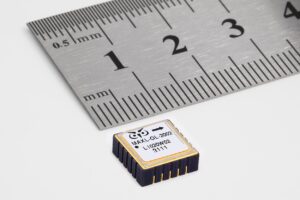
MAXL-OL-2002
- Sensing range: ±2 g
-
Equivalent Noise density in band:
1.2 µg/√Hz (max) - Bias repeatability: 0.5 mg (1σ)
Applications
- Tilt Sensing
- Seismic Sensing
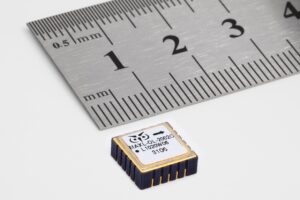

MAXL-OL-2002C
- Sensing range: ±2 g
-
Equivalent Noise density in band:
1.2 µg/√Hz (max) - Bias repeatability: 0.5 mg (1σ)
Applications
- Tilt Sensing
- Seismic Sensing
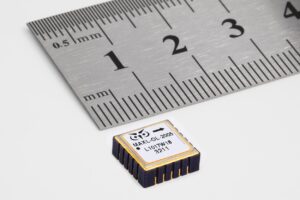
MAXL-OL-2005
- Sensing range: ±5 g
-
Equivalent Noise density in band:
1.6 µg/√Hz (max) - Bias repeatability: 0.8 mg (1σ)
Applications
- Tilt Sensing
- Seismic Sensing
- Inertial Navigation
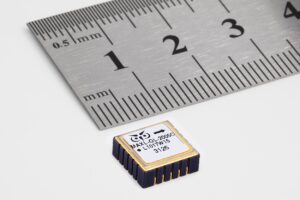

MAXL-OL-2005C
- Sensing range: ±5 g
-
Equivalent Noise density in band:
1.6 µg/√Hz (max) -
Bias repeatability: 2.4 mg (max),
0.8 mg (1σ)
Applications
- Tilt Sensing
- Seismic Sensing
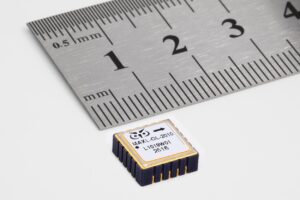
MAXL-OL-2010
- Sensing range: ±10 g
-
Equivalent Noise density in band:
2.2 µg/√Hz (max) - Bias repeatability: 1.5 mg (1σ)
Applications
- Seismic Sensing
- Vibration Sensing
- Inertial Navigation
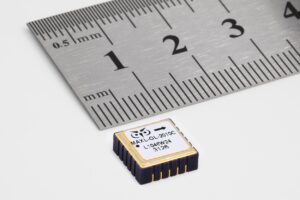

MAXL-OL-2010C
- Sensing range: ±10 g
-
Equivalent Noise density in band:
2.2 µg/√Hz (max) -
Bias repeatability: 4.5 mg (max),
1.5 mg (1σ)
Applications
- Seismic Sensing
- Vibration Sensing
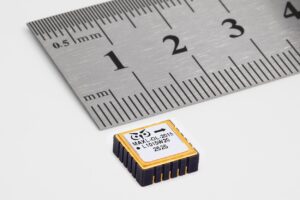
MAXL-OL-2015
- Sensing range: ±15 g
-
Equivalent Noise density in band:
4 µg/√Hz (max) - Bias repeatability: 2 mg (1σ)
Applications
- Vibration Sensing
- Inertial Navigation


MAXL-OL-2015C
- Sensing range: ±15 g
-
Equivalent Noise density in band:
4 µg/√Hz (max) -
Bias repeatability: 6 mg (max),
2mg (1σ)
Applications
- Vibration Sensing
- Inertial Navigation
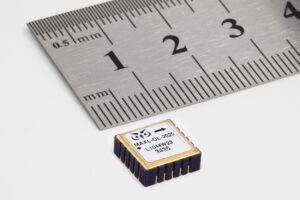
MAXL-OL-2020
- Sensing range: ±20 g
-
Equivalent Noise density in band:
4 µg/√Hz (max) - Bias repeatability: 2 mg (1σ)
Applications
- Vibration Sensing
- Inertial Navigation


MAXL-OL-2020C
- Sensing range: ±20 g
-
Equivalent Noise density in band:
4 µg/√Hz (max) -
Bias repeatability: 6 mg (max),
2mg (1σ)
Applications
- Vibration Sensing
- Inertial Navigation

MAXL-OL-2040
- Sensing range: ±40 g
-
Equivalent Noise density in band:
5 µg/√Hz (max) - Bias repeatability: 4 mg (1σ)
Applications
- Vibration Sensing
- Inertial Navigation


MAXL-OL-2040C
- Sensing range: ±40 g
-
Equivalent Noise density in band:
5 µg/√Hz (max) - Bias repeatability: 4 mg (1σ)
Applications
- Vibration Sensing
- Inertial Navigation
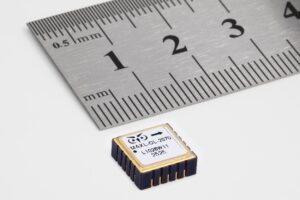
MAXL-OL-2070
- Sensing range: ±70 g
-
Equivalent Noise density in band:
5 µg/√Hz (max) - Bias repeatability: 7 mg (1σ)
Applications
- Vibration Sensing
- Inertial Navigation


MAXL-OL-2070C
- Sensing range: ±70 g
-
Equivalent Noise density in band:
5 µg/√Hz (max) - Bias repeatability: 7 mg (1σ)
Applications
- Vibration Sensing
- Inertial Navigation
In-Plane MEMS Device
The unique in-plane geometry of the sensors' MEMS element enables it to use a highly symmetrical comb structure based on a full capacitive bridge topology. Physical Logic's smart in-plane concept enables excellent capacitance linearity over a large proof mass displacement. Another advantage of our in-plane concept is extremely low thermo-mechanical noise levels, achieved by sealing at atmospheric conditions without using less-reliable vacuum packaging techniques.
ASIC
Our ASIC includes an Analog Front End (AFE) and a highly sensitive temperature sensor. The AFE is implemented in a continuous-time chopper stabilized trans-capacitance to voltage convertor (CVC) topology. We feature a low pass filter for signal bandwidth adjustment.
The AFE delivers a fully differential analog output featuring a 126 dB dynamic range, <0.5% linearity in the output voltage range, and excellent offset stability.
The ASIC features low power consumption.
Compact Packaging
We offer the LCC20 standard packaging size for Open-Loop accelerometers. Assembly is preformed using a highly standardized, automatic assembly process. In our assembly process the MEMS and ASIC chips are fabricated separately and integrated into the package. The interface between the MEMS, ASIC and the package is utilized by wire bonding.
